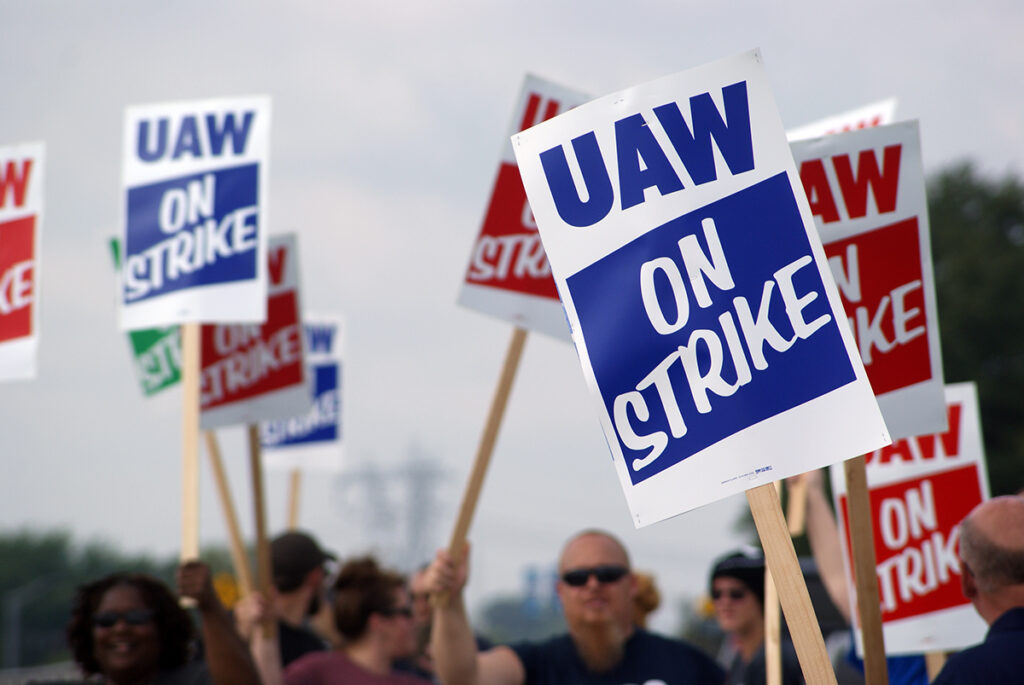A contentious labor dispute is currently shaking the automotive industry, as the United Auto Workers (UAW) union files unfair labor practice complaints against Ford, Stellantis and General Motors for their perceived reluctance to respond adequately to the union’s economic demands. With just two weeks remaining before the contracts with the union’s 146,000 members expire, tensions are running high. Ford, one of the Detroit Three, did provide a counterproposal but failed to meet the union’s expectations. UAW President Shawn Fain has hinted at the possibility of a strike when the current agreements expire at 11:59 p.m. on September 14th. Central to this conflict is the UAW’s push for an increase in top-scale assembly plant worker wages from the current $32 per hour to $47 per hour.
A Profound Stalemate Anticipated
The standoff between the UAW and the automakers unfolds against a backdrop of rapid changes in the automotive industry, including the transition to electric vehicles (EVs), supply chain disruptions, and a tight labor market. Negotiating new contracts in such a dynamic environment presents considerable challenges.
In a recent Facebook Live meeting, UAW President Shawn Fain expressed the union’s frustration with the automakers’ response to their demands. Ford was the only company to present a counteroffer, but it fell short of the union’s expectations. Ford’s proposal included a 9% general wage increase over the life of a four-year contract, opting for lump-sum payments instead of the union’s requested cost-of-living adjustments. Moreover, Ford resisted eliminating wage tiers altogether, instead proposing a reduction in the time it takes for new hires to reach the top of the pay scale, from eight years to six years.
The UAW’s economic demands underscore their determination to secure better working conditions and wages for their members. To understand this ongoing dispute better, we must examine recent auto worker strikes and the outcomes that concluded these labor actions.
Outcomes of Recent Auto Workers Strikes
- The General Motors Strike of 2019: In September 2019, nearly 50,000 UAW members went on strike against General Motors. This 40-day strike revolved around issues like wage increases, job security, and healthcare benefits. Ultimately, the strike concluded with a tentative agreement that included substantial wage increases, a path to permanent employment for temporary workers, and the preservation of healthcare benefits.
- The Fiat Chrysler (now Stellantis) Strike of 2019: Around the same time as the General Motors strike, UAW members at Fiat Chrysler plants went on strike. While shorter in duration than the General Motors strike, lasting only a few weeks, it resulted in a new contract. This contract included wage increases and a commitment from the company to invest in U.S. manufacturing facilities.
- The Ford Strike Threat of 2020: In 2020, the UAW threatened to strike against Ford but reached a tentative agreement before initiating a strike. This agreement included wage increases, signing bonuses, and commitments to invest in U.S. manufacturing.
These past strikes illustrate that compromises were made to address key issues raised by the UAW, however the most recent demands are an unprecedented development. Common compromises included wage increases, job security measures, investments in U.S. manufacturing, and preserving healthcare benefits, but nearly 47% increase is hard to fathom. However, this Hot Labor Summer has already seen UPS avoid a massive strike by raising wages for some employees by as much as 55%.
Future Wage Predictions
Historical patterns suggest minimal wage increases for cost of living increases, typically ranging from 3% to 5% annually, has been common in UAW contracts. Considering the UAW’s demand to raise top-scale assembly plant worker wages from $32 per hour to $47 per hour, and considering the current climate in the labor sector, we may see United Auto Workers get close to what they are asking for.
Let’s consider a 25% average annual wage increase over the life of a four-year contract: Starting from the current wage of $32 per hour, a 25% annual increase would result in an hourly wage of approximately $40 at the end of the first year.
This prediction represents a middle-ground estimate that takes into account both the union’s aspirations and the automakers’ financial considerations. Seeing that Ford has already come out with a 9% offer, it seems likely we’ll see something in the double digits.





